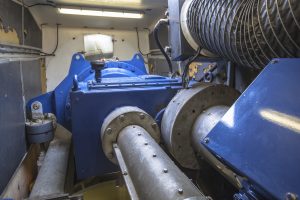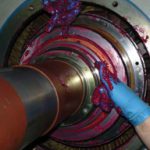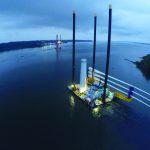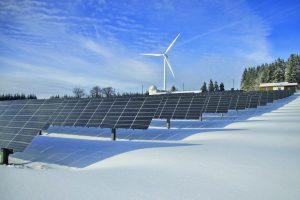As more and more wind power plants come off of warranty, scheduling for specialty sub-contractors becomes an issue.
Your approach scheduling services in the wind industry has a large effect on the success of your maintenance efforts. In the wind industry maintenance sector, “when, how, and who” really affects the bottom line of your profitability. In our industry, schedules for service are often adjusted daily due to weather changes. For example, if a turbine is scheduled for lubrication service, but winds are strong, instead of stopping the turbine to perform the service, you can allow the turbine to run and come back on another day when the wind is not blowing. At some wind farms, they may just stop the turbine and do the service, and eat the energy production loss. This is not the best option for production, as that wind will never come back. As an owner of a wind farm, you know there are a variety of things that affects the schedule of the wind farm maintenance. Other factors that affect the schedule include: the availability of resources (budget, personnel, parts, equipment, and tools); utility rates; power outages (both scheduled and unscheduled); and varying weather conditions (e.g. lightning, no wind, extreme wind).
Some services that your wind plant requires are not handled by your O&M staff and are contracted out to specialist subcontractors. These services may include: blade inspection and repair; end-of-warranty inspections; and condition monitoring services. Scheduling these services may require long lead times.
There is limited manpower for specific skilled workers in wind, and you, the wind farm owner, are competing with other wind farm owners, operators and managers for these skilled companies and individuals. Let me say that again. You are competing with all the other wind farms in the U.S. for specialty services. For example, in many regions in the U.S., blade maintenance service is performed in the summer months due to the weather patterns. During other seasons, the northern part of the U.S. is too cold or wet to schedule continuous composite repairs. It is well known that scheduling a blade repair in the winter months will cost you considerably more in labor and delays due to weather. This is because of the affects of temperature and moisture on the materials used for service (not to mention the higher wind speeds). This is partly why most blade repair is scheduled during the warmer months. If you are planning to have blade repair performed in August, you can bet that many of the other wind farm owners in the Northern Hemisphere are planning the same thing. You are competing for services with everyone else in the nation for the attention of these service providers. Believe me, as the turbines age, there are more and more needs for repair.
Those wind farm operators who give a decision-maker a budget and allow him time to investigate, choose, and hire a subcontractor will get the first choice of contractors. These operators have successfully scheduled services and reduced their stress level. Those that don’t do this are only causing delays and stress to their own internal operation.
Another area that requires advance scheduling is end-of-warranty inspections. Getting that experienced technician out to your wind farm to perform the inspection and provide a report takes some time—but that is just the beginning. The data from the end-of-warranty inspection report needs to be reviewed by an individual or team within the company. Big decisions need to be made as to what may be reported as a warranty claim, and how to follow up on the inspection to get the best results. This takes time, and if the turbine has many warrantable problems, spending quality time on this could result in saving hundreds of thousands of dollars in the cost of repairs. Any undiscovered problems in the turbine become the responsibility of the owner once the warranty period expires. An experienced inspector can get the manufacturer to fix these problems under warranty before it expires.
Scheduling these services a year or more in advance is not unreasonable. If you wait until even six months in advance, you may find that you are too late to get the work performed as you wish.
Why can’t you get the service as you had hoped? You did not have the budget in place to schedule the service early enough. You called on contractors that provide the service and found that they were already scheduled elsewhere. Time is ticking and now you are under pressure.
If you don’t schedule these specialty services early enough, you will find that the work does not get done, costs extra, or the damages creep up on you later. The damage creep will increase your risk, cost and reduce your ability to be proactive because you will find yourself chasing fires and you will not be able to plan as you wish. Not getting an end-of-warranty inspection done on time is just unthinkable to me, as that could cost you thousands if not millions of dollars in the future that could have been avoided.
If you’re the buyer, you need to be ready to schedule your work. To do this you need to supply your decision-maker with a budget, know what you want, and know when you want it. Otherwise, you’re just wasting time and delaying or preventing the service from being performed.




































